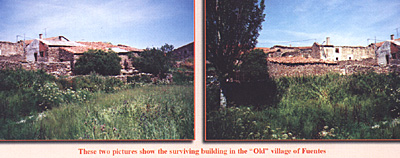Fuentes de Onoro
Vigour and Rapidity
by Raymond P. Cusick, UK
| |
The training schedule was broadly divided
into two halves. The first part was based
on the traditional battalion training programme
as per line troops, covering all the
stages of line, column, square and echelon
with evolutions based on Dundas’s 18
Movements. [9]
The second part covered all the
duties of light troops and was based on Colonel
Baron von Rottenberg’s [10] “Regulations
for the Exercise of Riflemen and Their Conduct
in the Field”, and Neil Campbell’s
“Instructions for Light Infantry and Riflemen”,
and Captain Cross’s “A System of
Drills and Manoeuvres”. [11]
Importantly the study and well being of each individual soldier
was considered and he was schooled to accept and shoulder responsibil-ity
as a ‘thinking soldier’, and learn to make battlefield decisions. He
was encouraged to develop his individual skills, with marksmanship an
important one, all this was opposite to the pre conditioned Prussian
automaton. Consequently Prussian drill with the parade step (or ‘goose
step’) and stamping of feet were shunned. Fast light movements that
were easy on the body were used. As Frederick said, “If I allowed my
soldiers to think they would all leave”.
In 1803, Lieutenant John Cooke joined the 43rd Regiment as
ensign [12] from the 1st West Yorkshire Militia as the 43rd began their
conversion to light infantry. He made notes in his Memoirs regarding
his drill and training.
“During the summer the troops in the numerous towns and camps
in Kent were reviewed. [13] Our brigade left Ashford and joined two
battalions of the 95th Rifle Corps, (now the Rifle Brigade) at Brabourne
Lees, and manoeuvred before the Duke of York. The 43rd and 52nd
light infantry regiments were organised at Hythe and Shorncliffe Camp
under the immediate superintendence of Sir John Moore, assisted by
Major General McKenzie, [14] in the most exemplary manner. Those
corps were the admiration of all for their discipline and rapidity of their
light movements, all of which were executed on the movable pivot by
divisions or sections. They formed columns, squares, lines and echelons,
without a halt, by merely marking time. The movable pivot
preserved a regular cadence, handsome to the sight and of great utility.
In time these evolutions extended throughout the army”.
One of the very rare occasions where it is possible to see the
modern British soldier carry out such archaic evolutions to the movable
pivot is when the Brigade of Guards, ceremonially, Troop the Colour
on Horse Guards Parade in June. Interestingly they also ‘slow march’
and ‘quick march’ but the old 19th C command ‘march’ (at 75 paces per minute) is now defunct. [15]
Also in John Cooke’s memoirs is an interesting
account of how a new officer learnt the
drill and how thorough was the instruction:
“When an officer entered this corps it was
the custom to send him to drill with a squad
composed of peasant from the plough and other
raw recruits, to learn the facings, marching, and
companies evolutions. That being completed he
put on cross-belts and pouch and learned the
firelock exercise, again marching with the same.
When it was considered that the whole
were perfect, with and without arms, they began
to skirmish in extended files. Last of all they
learned the duties of a sentry, and to fire ball
cartridge at a target. The officer was not considered
clear of the adjutant until he could put a
company through the evolutions by word of
command, which he had practiced in the ranks.
It generally took him six months in summer at four times a day, an hour at each period, to perfect
all he had to learn. The drill was never kept more
than an hour under arms when, to a minute, the time
beater tolled his drum, the only one in the corps (the
light infantry regiments using bugles), [16]
and the recruits instantly dismissed.” [17]
The average march pace for general light infantry
duties was about 90 p/m, and in action over a
hundred p/m and often at the double. (Quick and double quick time)
Fuentes de Onoro Light Troops in Action
|
 Training camps were established, and for
the first summer months they were tented, for
the training of the new light regiments at
Shorncliffe Camp in Kent near Hythe, and at
Brabourne Lees near Ashford in Kent.
Lt. General Sir John Moore’s idea for
light infantry — ‘A specially trained force that
did not require much men of stature as it
required men to be intelligent, hardy and active;
and they should be in the first instance be
young or they will neither take to the service
nor be easily instructed in it.’ [8]
Training camps were established, and for
the first summer months they were tented, for
the training of the new light regiments at
Shorncliffe Camp in Kent near Hythe, and at
Brabourne Lees near Ashford in Kent.
Lt. General Sir John Moore’s idea for
light infantry — ‘A specially trained force that
did not require much men of stature as it
required men to be intelligent, hardy and active;
and they should be in the first instance be
young or they will neither take to the service
nor be easily instructed in it.’ [8]